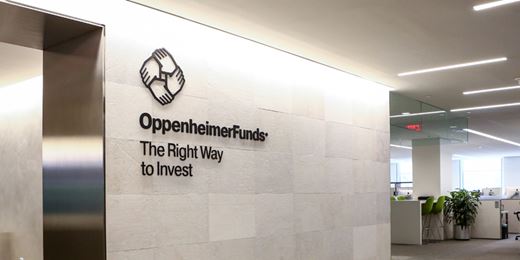Last week, I had the opportunity to spend the day meeting with portfolio managers and economists at Oppenheimer Funds in New York City. I always enjoy my time out of the office meeting with the impressive folks who work on (or near) Wall Street, and I am happy to share some of their thoughts with you.
Emerging and developed international markets continued to be an investment theme almost wherever we go. We are currently looking at the longest period of under-performance for international markets in 40 years. Indeed, according to Bloomberg, the ACWI (the most common international index) is trading at a 13 price to earnings ratio (traditionally it trades at an 18 price to earnings ratio), whereas the SP500 Index is trading at an 18 price to earnings ratio which is close to its long term average. This relative under-valuation is an attractive metric, despite the uncertainty surrounding trade and tariffs (or perhaps it is partially because of that talk!!). However, China has a strong incentive to resolve their issues with the USA, as over 180 Million jobs are directly affected by their export sector so we are cautiously optimistic.
Emerging markets also continue to be a hot topic. According to the Brooking Institute (1), the global middle class was 3.2 Billion people in 2016, due to grow to 4.2 Billion in 2022. This growth of “the middle class” is already having far ranging effects on the global economy, and it will only continue with the predicted 33% predicted growth of the middle class over the next few years. The growing emerging markets may also create attractive opportunities in connection with emerging markets debt, where yields tend to be higher, although the volatility is typically higher, as well. Indeed, according to Bloomberg, the yield spread is near a ten year high, at slightly over 5%, which can create some nice returns.
Please contact us with any questions as to how we can (or will) implement these ideas into your portfolios. In the meantime, stay warm!!
# # #
The Dow Jones Industrial Average is comprised of 30 stocks that are major factors in their industries and widely held by individuals and institutional investors.
The Standard & Poor’s 500 Index is a capitalization weighted index of 500 stocks designed to measure performance of the broad domestic economy through changes in the aggregate market value of 500 stocks representing all major industries.
MSCI ACWI Index: The MSCI ACWI Index covers approximately 85% of the world’s investable equity market capitalization (large and mid-caps). Approximately 50% U.S. stocks, 40% international developed stocks, 10% emerging market stocks.
The Price-to-Earning (P/E) ratio is a measure of the price paid for a share relative to the annual net income or profit earned by the firm per share. It is a financial ratio used for valuation: a higher P/E ratio means investors are paying more for each unit of net income, thus, the stock is more expensive compared to one with a lower P/E ratio.
(1) https://www.brookings.edu/wp-content/uploads/2017/02/global_20170228_global-middle-class.pdf


